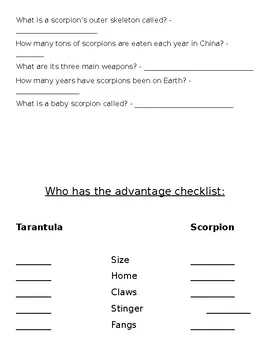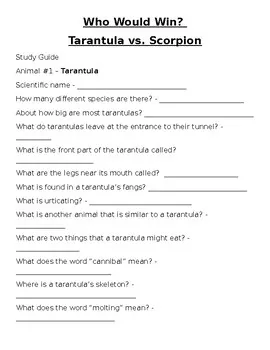Understanding the Tarantula and Scorpion
The natural world is full of dramatic confrontations, and few are as captivating as the potential battle between a tarantula and a scorpion. Both are formidable predators, equipped with unique strengths and survival strategies. Understanding these creatures is the first step toward predicting who might emerge victorious in a face-off. Their habitats, physical attributes, and defensive mechanisms offer clues to their chances of survival. These arachnids are masters of their environments, perfectly adapted to their roles in the ecosystem. Delving into their characteristics reveals the complexity and intensity of their possible encounters. The outcome of a fight depends on numerous factors, making it a fascinating subject of study and speculation. It’s a clash between two titans of the invertebrate world.
Tarantula Characteristics
Tarantulas, known for their hairy bodies and impressive size, are among the largest spiders in the world. These arachnids are found in various habitats, from tropical rainforests to arid deserts, and have evolved unique adaptations for survival. They are nocturnal hunters, primarily preying on insects, small reptiles, and occasionally even small mammals. Their imposing appearance and specialized hunting techniques make them formidable predators in their own right. Their lifestyle, including molting and venom delivery, showcases their advanced evolutionary adaptations. Understanding their characteristics is crucial to assessing their chances in a potential battle.
Physical Attributes

Tarantulas are characterized by their large size, ranging from a few inches to over a foot in leg span, depending on the species. They possess eight legs covered in sensory hairs, allowing them to navigate their environment and detect vibrations. Their bodies are divided into two main parts the cephalothorax, which houses the head and legs, and the abdomen, where the digestive and reproductive organs are located. The tarantula’s fangs are significant, used for injecting venom and subduing prey. Their robust build and powerful legs contribute to their hunting prowess, providing the strength and agility needed to capture prey and defend themselves against potential threats. This contributes to the tarantula’s status as a formidable opponent in its own right.
Defensive Mechanisms
When threatened, tarantulas employ a range of defensive mechanisms. One of the most notable is the release of urticating hairs from their abdomen. These hairs, when brushed against an attacker, cause intense irritation and can deter predators. Additionally, tarantulas may bite, injecting venom that is generally not lethal to humans but can cause pain and discomfort. Their size and powerful legs also contribute to their defense, allowing them to strike or flee from danger. They also have the ability to autotomize legs, leaving a leg behind to escape a predator, and regenerate it later, showcasing their adaptability. The combination of these defenses makes tarantulas difficult to subdue, adding another layer of complexity to a potential battle.
Scorpion Characteristics
Scorpions are easily recognized by their segmented bodies, eight legs, and iconic tails ending in a venomous stinger. These arachnids are ancient creatures, having roamed the earth for millions of years. They are found in a wide range of habitats, from deserts to forests, and have adapted to survive in harsh conditions. Scorpions are nocturnal hunters, primarily preying on insects and other invertebrates. Their unique anatomy and hunting strategies make them highly efficient predators. Understanding their specific characteristics is vital to assessing their potential in a conflict with a tarantula.
Physical Attributes

Scorpions possess a segmented body, divided into a cephalothorax (fused head and thorax), an abdomen, and a tail (metasoma) ending in a stinger. Their bodies are covered in a tough exoskeleton that provides protection. They have eight legs and two pedipalps, which are used for grasping and sensing prey. The stinger is the scorpion’s primary weapon, used to inject venom that can paralyze or kill prey. Their size varies widely, but some species can be quite large and imposing. Their segmented body provides flexibility, allowing them to move with agility and maneuver in tight spaces. The physical attributes of the scorpion contribute to its success as a predator, enabling it to hunt effectively and defend itself against threats.
Defensive Mechanisms
Scorpions have several defensive strategies. The most obvious is the venomous stinger located at the end of their tail, used to inject a potent neurotoxin into attackers or prey. They can also use their pedipalps (pincer-like claws) to grasp and crush their opponents. Their hard exoskeletons provide protection against physical attacks. Scorpions may also employ defensive postures, raising their tails in a threatening manner to deter potential threats. Some species can also make a hissing sound by rubbing body parts together, a warning signal to potential predators. The combined defensive mechanisms make the scorpion a formidable opponent, capable of both offense and defense in a confrontation.
Factors Determining the Winner
Predicting the outcome of a fight between a tarantula and a scorpion involves considering several key factors. These include the size and strength of each opponent, the potency of their venom, their agility and tactical prowess, and the environment in which the battle takes place. Understanding these factors will give a more realistic expectation of who might win. Each element can influence the final outcome. The environment where the battle takes place, for example, is a significant determinant of the battle’s outcome. The size difference may mean a huge difference. These considerations paint a more detailed picture of how these creatures are likely to fight.
Size and Strength

Size often plays a significant role in battles between animals. Larger individuals tend to have an advantage in terms of strength and reach. In a tarantula vs. scorpion scenario, the size difference will greatly influence the outcome. A larger tarantula could potentially overpower a smaller scorpion, while a large scorpion might be able to subdue a smaller tarantula. The physical strength of each creature determines their ability to grapple, strike, and defend. The larger and more robust animal often has a distinct advantage in close combat, affecting its ability to maneuver and inflict damage. Therefore, size and strength remain key factors in predicting the winner.
Venom Potency
Venom is a critical factor in the effectiveness of both the tarantula and the scorpion. The potency of the venom and the amount injected can quickly incapacitate an opponent. Scorpions are famous for their venom, which can cause paralysis and potentially death, while tarantulas have less potent venom, typically used to subdue prey. However, the effectiveness of venom depends on factors such as the size and health of the target. A highly venomous scorpion could potentially disable a tarantula, while a tarantula’s bite, though less potent, can still inflict pain and may cause the scorpion to retreat. The effect of the venom and the location of the strike are also important elements.
Agility and Tactics
Agility and tactical prowess are crucial in a fight. The ability to move quickly, evade attacks, and deliver strikes can significantly affect the outcome. Both tarantulas and scorpions have their own advantages in terms of agility. Tarantulas, with their powerful legs, can move with surprising speed and agility, allowing them to evade attacks or strike quickly. Scorpions, with their flexible bodies and tail, can deliver stinging attacks with precision. The tactical approach each creature takes, such as the use of ambush, defensive postures, and the ability to exploit weaknesses, can tip the balance of power. A well-timed strike, combined with effective evasion, can give an advantage. The one that adapts its strategy most effectively is likely to win the battle.
Habitat and Environment

The environment where the battle takes place can have a significant impact. The terrain, presence of hiding places, and overall climate influence the fight. A tarantula might have an advantage in a more open environment where its size and speed give it an edge. A scorpion might benefit from a rocky environment, where it can utilize its agility to navigate and attack. Environmental factors such as temperature and humidity can also affect the performance of both creatures. The creature that is better suited to its environment is likely to have an advantage. The availability of resources in the environment also influences the outcome of the battle. Thus, the place the fight takes place is as important as any other factor.
Predicting the Outcome
Predicting the winner in a tarantula vs. scorpion battle is a complex undertaking, as it depends on a combination of factors. The outcome is rarely certain, and the specific circumstances of the fight play a crucial role. A fight between a tarantula and a scorpion is a complex event. Both have a chance of winning, and the result depends on a multitude of variables. However, with knowledge of the key factors, one can speculate with more confidence about the potential outcomes.
Potential Outcomes
There are several potential outcomes in a tarantula vs. scorpion battle. A larger tarantula could potentially overpower a smaller scorpion through sheer size and strength. A highly venomous scorpion might be able to incapacitate a tarantula quickly with a well-placed sting. The battle could end in a stalemate, with neither creature able to gain a decisive advantage. The environment, including hiding places, can also affect the outcome. It’s also possible that one might retreat, avoiding a direct confrontation. The various scenarios highlight the unpredictable nature of the encounter and the complexity of these conflicts.
Scorpion Victory Scenario

In a scenario where the scorpion wins, several factors could contribute to its victory. If the scorpion is larger or more agile, it can outmaneuver the tarantula, avoiding its bites and strikes. The scorpion’s venom is highly potent, able to quickly paralyze the tarantula, giving it an advantage. An accurate sting to a vulnerable area, such as the cephalothorax, could disable the tarantula. A favorable environment, such as a rocky area where the scorpion can move quickly and the tarantula has a tough time, could increase its chances of survival. Essentially, the scorpion must be able to deliver a debilitating sting while avoiding the tarantula’s attacks.
Tarantula Victory Scenario
The tarantula’s chance of winning increases with its size and strength. If the tarantula is larger, it may be able to overpower the scorpion through sheer force. The tarantula’s bite can be very damaging, and if it manages to bite the scorpion, it may be able to subdue it. The tarantula’s defensive mechanisms, such as urticating hairs, could irritate the scorpion and give it an advantage. A tarantula might benefit from an environment, such as a more open area, where its agility and speed can be used. The tarantula must avoid the scorpion’s sting and capitalize on its strength and predatory skills. In a head-to-head fight, it must apply force and speed.
Where to Witness These Battles
Witnessing a real-life tarantula vs. scorpion battle in nature is extremely rare, and encounters are usually fleeting and difficult to observe. The best way to witness these battles might be through documentaries, research studies, and videos that document such encounters. Some zoos and educational institutions may have exhibits that showcase these animals and their interactions. However, it is essential to remember that such battles are inherently risky and that the safety of both the animals and the observers must be considered. Observing these creatures in their natural habitats through responsible wildlife tourism is a better way to learn more about the natural world and their interactions.
